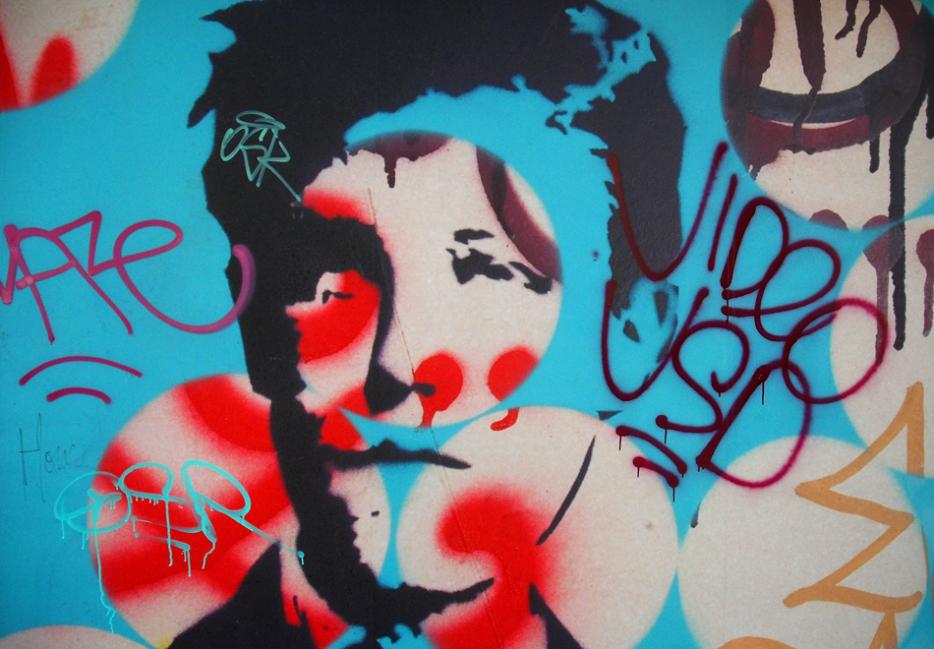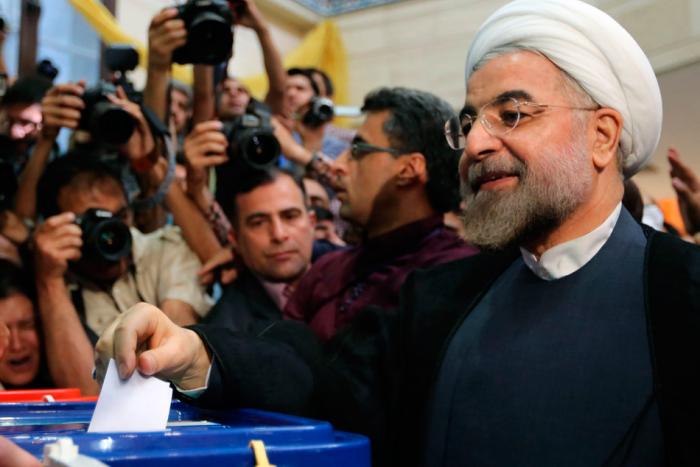In the first line of Rimbaud’s famous poem “Voyelles,” he lists off a set of matched pairs like an imperious dance teacher assigning partners for the foxtrot: “A noir, E blanc, I rouge, U vert, O bleu.” The images that follow show white E in “frissons d’ombelles” (shivers of cow-parsley); black A in “mouches éclatantes” (brilliant flies); green U in the “vibrements divins des mers virides” (divine shudderings of bluish-green seas).
My first instinct is to disagree. A is black? Ridiculous. It seems obvious that A is red. I would make I yellow, U blue—wait, maybe E blue—and I don’t have a strong feeling about O. It seems sort of striped, like a candy-cane.
Not to brag, but Rimbaud and I are a lot alike: neither of us are actually synesthetes. So why does the idea of associating a letter with a colour make sense to us? Rimbaud lived from 1854 to 1891, and it was during his short lifetime that the first experiments on synesthesia were conducted by neuroscientists of the day. In the past decade, synesthesia research has seen a renaissance, and some researchers are arguing that the outlandish sensations that synesthetes report—seeing sound, hearing smell, touching taste—aren’t because they have wildly different brains from the rest of us. It could be that their experiences are vivid, 3-D glasses–versions of associations we all perceive—just in a more muted, less consistent way.
One of the puzzling things about synesthesia is that, in general, the associations synesthetes make aren’t the same. Nabokov saw letters like this: “The long ‘a’ of the English alphabet… has for me the tint of weathered wood, but a French ‘a’ evokes polished ebony... Oatmeal ‘n’, noodle-limp ‘l’, and the ivory-backed hand-mirror of ‘o’ take care of the white…. Passing on to the blue group, there is steely ‘x’, thundercloud ‘z’ and huckleberry ‘h’.” But Billy Joel sees them this way: “A strong vowel ending, like an A or an E or an I, I associate with a very blue or a very vivid green...I think reds I associate more with consonants, a T or a P or an S.” It seems as though these coloured visions of letters (what’s referred to as grapheme-colour synesthesia) are entirely idiosyncratic.
However, recent studies suggest that there may be something more universal at work than simply quirky individual brain function. It turns out there’s actually some level of agreement in the wider population about which letters go with which colours. I’m not alone in thinking that A is red; studies conducted in 2005 and 2008 polling both synesthetes and non-synesthetes found that 33 to 40 percent said A was red, and 40 to 50 percent said Y was yellow. Researchers found above-chance similarities for about twelve other letter-colour pairings, as well.
Therefore, some scientists argue, synesthesia may have a learned component. A recent study found evidence for what I like to think of as the Fisher-Price effect. Nathan Witthoft and Jonathan Winawer from Stanford University tested 11 synesthetes who were born between 1970 and 1985, and found a remarkably strong agreement in their grapheme-colour associations: A is red, B is orange, C is yellow, D is green, E is blue, F is purple. And then it starts over: G is red, H is orange, I is yellow, J is green, K is blue, L is purple. What else did these 11 people have in common? They all grew up with a set of Fisher-Price alphabet magnets stuck to their family’s fridge. Fisher-Price’s magnet sets cycle through the rainbow as they progress through the alphabet (the final cycle is incomplete, so Z is orange). It’s the first time that a learned synesthetic experience across individuals has been recorded. Nabokov remarked that for him, “rainbow” was spelled “kzspygv.” For some North Americans, it may be spelled “abcdef.”
There’s something decidedly un-mystical about the Fisher-Price effect. In an essay collected in his recent book, Waiting for the Barbarians: Essays from the Classics to Pop Culture, Daniel Mendelsohn quotes from a series of letters 17-year-old Rimbaud wrote to his friends in 1871, in which he loftily declares: “I want to be a poet, and I’m working at turning myself into a Seer. You won’t understand any of this, and I’m almost incapable of explaining it to you. The idea is to reach the unknown by the derangement of all the senses.” He would do this, he wrote, by inventing a new language for poetry in which all the senses would be expressed through each other; a language “summing up everything, perfumes, sounds and colors, thought latching on to thought and pulling.” Rimbaud was the quintessential teenage rebel, growing his hair long and skulking around his mom’s house while vowing to escape humdrum reality. The idea of finding “the unknown” through unorthodox pairings of the senses is supposed to be transcendent.
That our senses may transcend the narrow roles we’ve fixed for them—sight and hearing and smell and taste all in their orderly boxes—is something we may resist on rational grounds, but informally, we recognize the fluidity of sense perception all the time. Witthoft and Winawer write:
[S]ynesthesia matters because relationships between ideas or modes of experience, such as those between pitch and brightness or space and number, that are implicit in the nonsynesthete are made explicit in the synesthete; making these relationships explicit provides an unobscured view of the representations underlying normal cognitive processes, such as cross-modal perception, abstraction, and metaphor.
We all tend to share the belief that small things are related to higher-pitched sounds, and that high-pitched sounds have a brightness to them. Our understanding of the world is shot through with these kinds of metaphors, and metaphor is the explanation that V.S. Ramachandran, the neuroscientist famous for books like The Tell-Tale Brain: A Neuroscientist's Quest for What Makes Us Human, offers for why synesthesia has persisted as humans have evolved. In a 2003 article in Scientific American, Ramachandran and his then-student Edward M. Hubbard wrote: “Our studies of the neurobiological basis of synesthesia suggest that a facility for metaphor—for seeing deep links between superficially dissimilar and unrelated things—provided a key seed for the eventual emergence of language.” Synesthetes may be able to articulate what the rest of us are dimly aware of but struggle to express.
The best poets strive for language that creates new links, new metaphors that, even in their newness, feel recognizable. There’s more to creating a lasting metaphor than jamming two dissimilar words together; there needs to be the “deep link” that Ramachandran talks about, a fitness to the match. Even if “ombelles” feels pink to me, it seems indisputable that “vibrements” is green. With purple undertones, like a rhubarb stalk. I’m definitely siding with Rimbaud over Fisher-Price on this one; according to their colour scheme, “vibrements” is mostly orange, which is just plain wrong.






